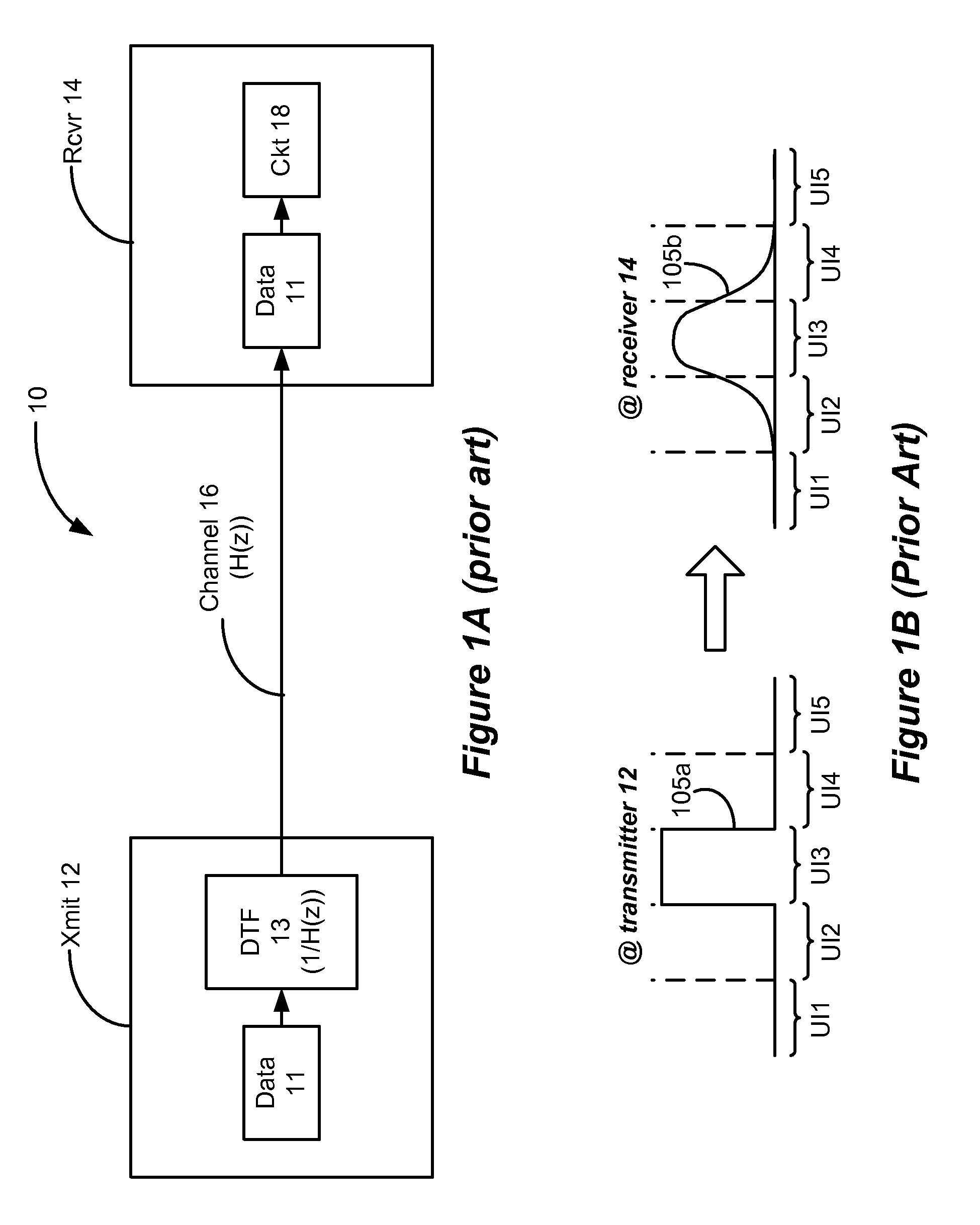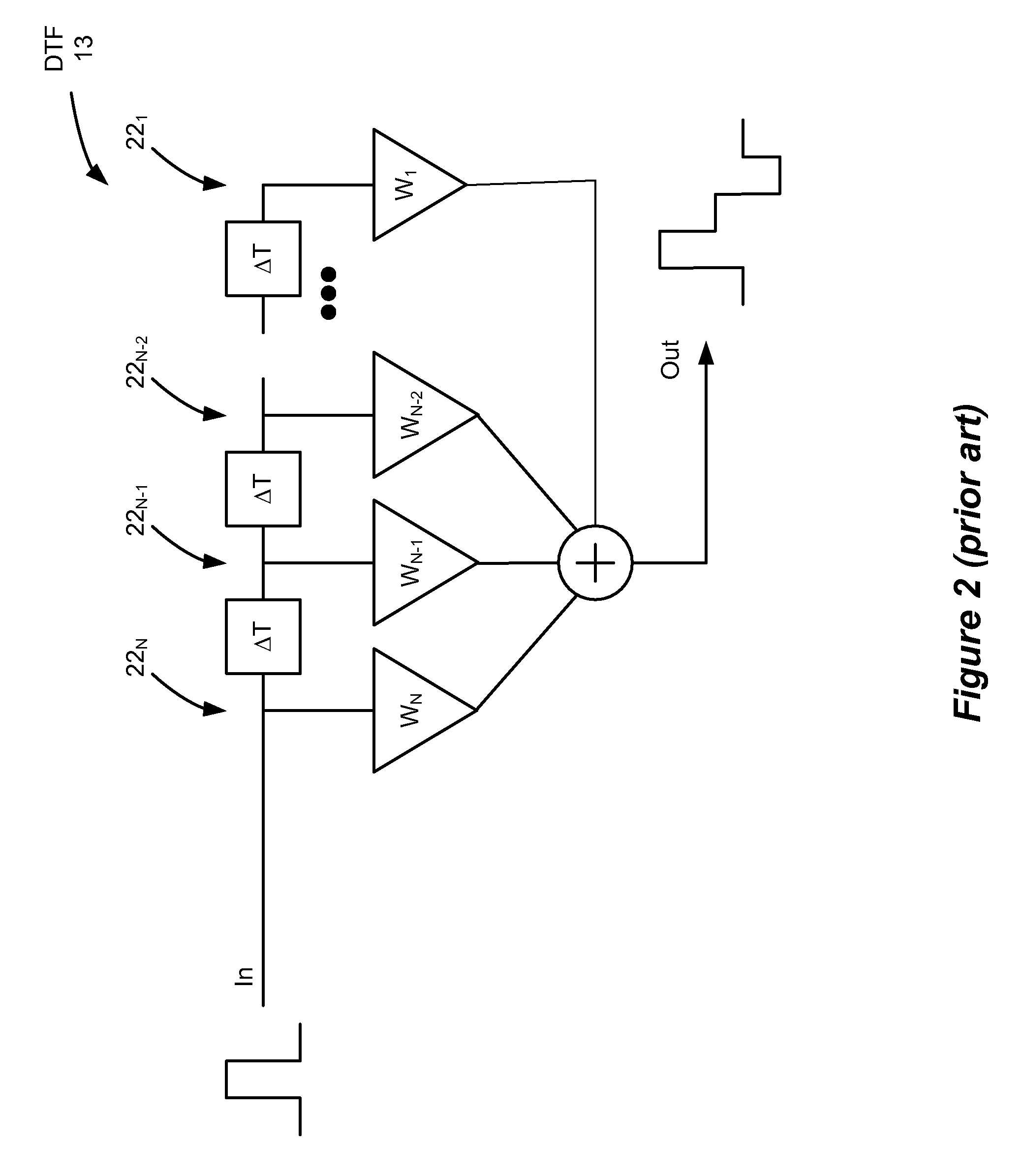Jittery signal generation with discrete-time filtering
a technology of discrete-time filtering and jittery signals, applied in the direction of line-faults/interference reduction, amplitude demodulation, pulse technique, etc., can solve the problems of increasing the number of taps, adding complexity to the design, and real transmitters and real transmission channels that do not exhibit ideal characteristics
- Summary
- Abstract
- Description
- Claims
- Application Information
AI Technical Summary
Problems solved by technology
Method used
Image
Examples
Embodiment Construction
The disclosed computer-implementable method allows for the fast creation of a multi-unit-interval vector suitable for simulation. The created vector represents the output of an otherwise ideal Discrete Time Filter (DTF) circuit, and the quick creation of the vector merely requires a designer to input into a computer system the number of taps and their weights without the need of laying out or considering the circuitry of the DTF. Specifically, a matrix is created in the computer system based on a given (preferably though not exclusively randomized) data stream of bits, and the number of taps and weights, which matrix is processed as disclosed herein to create the multi-unit-interval vector. Noise and jitter can be incorporated into the created vector such that it now realistically reflects non-idealities common to actual systems. Once created, the vector can then be simulated using standard computer-based simulation techniques, such as SPICE™. For example, the transmission of the cr...
PUM
 Login to View More
Login to View More Abstract
Description
Claims
Application Information
 Login to View More
Login to View More - R&D
- Intellectual Property
- Life Sciences
- Materials
- Tech Scout
- Unparalleled Data Quality
- Higher Quality Content
- 60% Fewer Hallucinations
Browse by: Latest US Patents, China's latest patents, Technical Efficacy Thesaurus, Application Domain, Technology Topic, Popular Technical Reports.
© 2025 PatSnap. All rights reserved.Legal|Privacy policy|Modern Slavery Act Transparency Statement|Sitemap|About US| Contact US: help@patsnap.com



